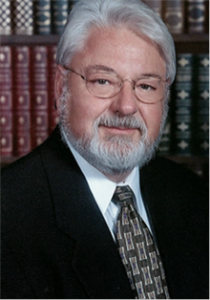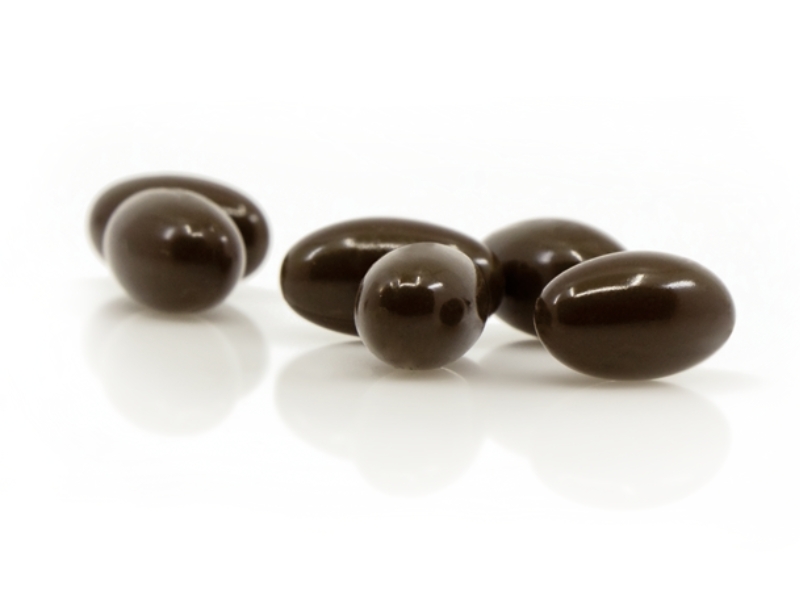
Dr. Judy says that the crystal-free Coenzyme Q10 supplements with the ubiquinone form of CoQ10 dissolved in vegetables oils will give consumers the best absorption.
Dr. William Judy, the long-time Coenzyme Q10 researcher and founder and president of the SIBR Research Institute, makes the point that the absorption cells in the human small intestine cannot absorb Coenzyme Q10 crystals. The absorption cells can handle Coenzyme Q10 only as single molecules.
Coenzyme Q10 raw material in the form of dry powder crystals
The Coenzyme Q10 raw material that Coenzyme Q10 supplement manufacturers purchase comes in the form of dry powder crystals. These crystals are formed in the multiple drying stages of the purification of Coenzyme Q10.
If these crystals are heated just to the normal body temperature – 37 degrees Celsius – the crystals will not dissociate into single Coenzyme Q10 molecules. The crystals will never be absorbed. They will be eliminated in the feces.
Have to heat the Coenzyme Q10 crystals to 50 degrees Celsius
The Coenzyme Q10 raw material crystals have to be heated to at least 50 degrees Celsius in a lipid – a fatty substance that is insoluble in water – for the crystals to dissociate to single molecules in the lipid or in a mixture of lipids. Then, the dissociated single molecules have to be sealed in soft gelatin capsules without the single molecules’ reverting back to crystal form. The Coenzyme Q10 supplements that give the best absorption are the supplements that have Coenzyme Q10 pre-heated and dissolved in lipids – typically vegetable oils – inside the capsules.
Coenzyme Q10 a fat-soluble substance
Coenzyme Q10 is itself a fat-soluble substance. If the Coenzyme Q10 crystals are heated up in water, for example, the Coenzyme Q10 crystals will dissolve, but the dissolved Coenzyme Q10 will float on the surface of the water. If, then, the dissolved Coenzyme Q10 is allowed to cool back down to room temperature, the single molecules will re-crystallize in a period of 2 to 12 hours.
Re-crystallization of Coenzyme Q10 equals poor absorption
Capsules that contain much or all of the Coenzyme Q10 in re-crystallized form are not going to give a good absorption. Properly, the purpose of the soft-gel capsule should be to protect the Coenzyme Q10 molecules dissolved in the vegetable oils from re-crystallizing. It should not be the purpose of the capsules to hide the re-formed Coenzyme Q10 crystals from the view of the consumer [3].
The shapes of Coenzyme Q10 crystals
Interestingly, the re-crystallized Coenzyme Q10 molecules will not have the same appearance as the crystals in the original dry powder raw material. Under the microscope, the original raw material crystals look something like fish scales, according to Dr. Judy. The re-crystallized Coenzyme Q10 molecules, on the other hand, look more like little sea urchins with spines joined together. When the re-crystallized Coenzyme Q10 is squeezed out of a supplement capsule, the crystals look like spines.
The absorption of the various Coenzyme Q10 product types
What has Dr. Judy learned over the years about the absorption of different formulations of Coenzyme Q10, I asked.

Here is Coenzyme Q10 in the crystalline form that the supplement manufacturer purchases it. Merely putting the dry powder into a tablet or capsule is not good enough to make the substance absorbable.
Avoid dry powder Coenzyme Q10 products
First of all, he said, avoid the dry powder products. Dry powder Coenzyme Q10 in a tablet or dry powder Coenzyme Q10 in water or in oil inside a capsule will not give an absorption above 1 percent.
Colloidal and liposomal and nanoparticle formulations of Coenzyme Q10 not up to speed
Secondly, formulations with intriguing names – colloidal or liposomal or nanoparticle – have so far not been shown to improve absorption very much, perhaps up to the level of 2 and maybe 3 percent.
Coenzyme Q10 preparations with ubiquinol?
Thirdly, formulations using the reduced form of Coenzyme Q10 – using the very unstable ubiquinol form instead of the much more stable ubiquinone form – have not shown impressive absorption in the studies that Dr. Judy has done. With this in mind, it would be best to regard the marketing claims for the absorption of ubiquinol products skeptically.
In Dr. Judy’s studies, the best ubiquinol formulations have managed to rise only to the level of 3 to 4 percent percent of a 100 mg dose. In fact, if the absorbed ubiquinone is measured in the abdominal lymph duct and ubiquinol is measured in the thoracic lymph ducts, then there is no difference in the absorption of ubiquinone and ubiquinol unlike the difference that is found later on in the blood plasma. The absorption of the two forms of Coenzyme Q10 into the abdominal and thoracic lymph ducts is almost equal. Ubiquinone absorbed into the abdominal lymph duct is converted to ubiquinol before it enters the thoracic lymph duct.
Crystal-free ubiquinone Coenzyme Q10 formulations
Fourthly, we are still waiting for published studies of definitive comparisons of the absorption of the two forms of Coenzyme Q10: ubiquinone and ubiquinol. Until then, the data from Dr. Judy’s studies show that crystal-free ubiquinone soft-gel capsules with the Coenzyme Q10 dissolved in two or more oils give the best absorption: somewhere between 5.4% and 8.2% in Dr. Judy’s studies.
Making good Coenzyme Q10 capsules is difficult
As Dr. Judy says, everything starts with absorption. There is no sense in buying Coenzyme Q10 capsules that contain re-crystallized Coenzyme Q10. The crystals will not be absorbed.
Let’s face it. The conscious producer of Coenzyme Q10 capsules has his work cut out for him. He has to get the raw material Coenzyme Q10 crystals dissociated to single molecules in vegetable oils, and he has to get the Coenzyme Q10 single molecules into capsules without the molecules re-crystallizing. And, somehow – in a proprietary process – he has to ensure that the crystals will not re-form inside his Coenzyme Q10 capsules.
Absorption and beneficial health effects
Lacking the ability to do the sort of absorption testing that Dr. Judy does, I have tended to look for documentation of the beneficial health effects of Coenzyme Q10 preparations in medical journal articles:
- 2014: Significant improvement in the survival and symptoms of chronic heart failure patients taking 300 milligrams of Coenzyme Q10 daily for two years, reported by Dr. Svend Aage Mortensen [4].
- 2013: Significant improvement in cardiovascular mortality rates and significant reduction in hospitalizations of healthy elderly citizens taking 200 milligrams of Coenzyme Q10 and 200 micrograms of selenium daily for five years, reported by Dr. Urban Alehagen [1].
- 2014: Significant improvement in the physical function and symptoms of veterans with Gulf War illness taking either 100 or 300 milligrams of Coenzyme Q10 daily for 3.5 months, reported by Dr. Beatrice Golomb [2].
All three of these studies were conducted as randomized, double-blind, placebo-controlled studies, the gold standard design for scientific studies. There must have been good absorption in these studies because the Coenzyme Q10 treatment groups showed health benefits compared to the placebo control groups.
Sources:
- Alehagen, U., Johansson, P., Björnstedt, M., Rosén, A., & Dahlström, U. (2013). Cardiovascular mortality and N-terminal-proBNP reduced after combined selenium and coenzyme Q10 supplementation: a 5-year prospective randomized double-blind placebo-controlled trial among elderly Swedish citizens. International Journal of Cardiology, 167(5), 1860-1866.
- Golomb, B. A., Allison, M., Koperski, S., Koslik, H. J., Devaraj, S., & Ritchie, J. B. (2014). Coenzyme Q10 benefits symptoms in Gulf War veterans: results of a randomized double-blind study. Neural Computation, 26(11), 2594-2651.
- Judy, W.V., Stogsdill, W.W., Judy, D.S., & Judy, J.S. (2007). Coenzyme Q10: Facts or Fabrications? Natural Products Insider. Retrieved from http://www.zmc-usa.com/docs/CoQ10_Facts_or_Fabrications.pdf.
- Mortensen, S. A., Rosenfeldt, F., Kumar, A., Dolliner, P., Filipiak, K. J., Pella, D., & … Littarru, G. P. (2014). The effect of coenzyme Q10 on morbidity and mortality in chronic heart failure: results from Q-SYMBIO: a randomized double-blind trial. JACC. Heart Failure, 2(6), 641-649.









Leave A Comment